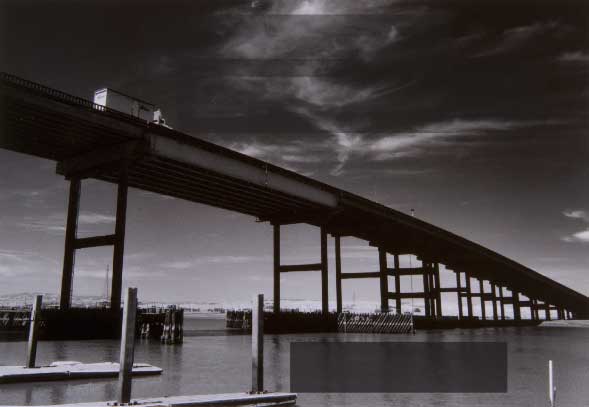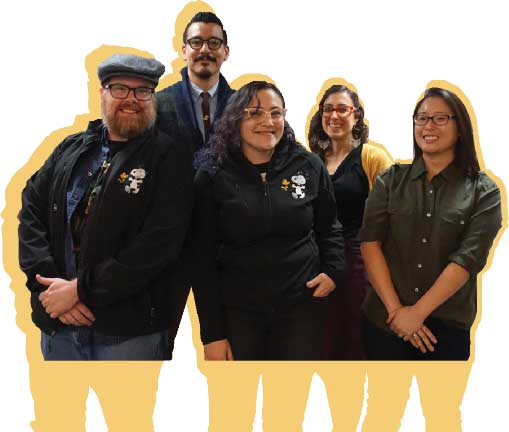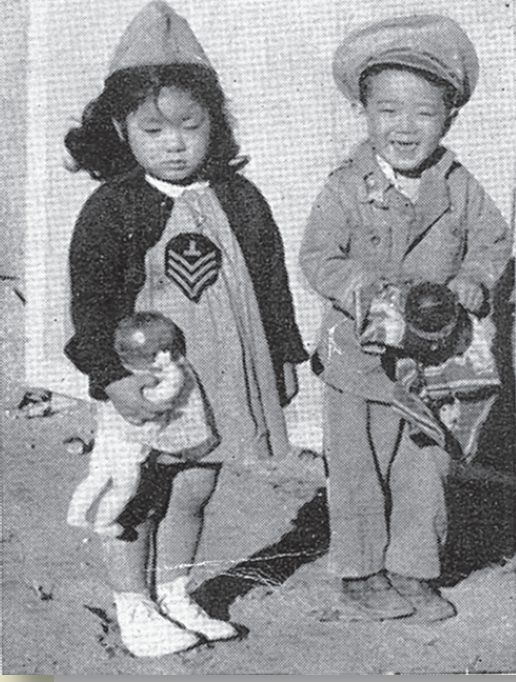Sonoma State University Library at the Jean and Charles Schulz Information Center
Table of Contents
The Sonoma State University Library fosters a transformative and welcoming environment for learning and scholarship, and empowers its community to be fluent users and creators of information across and beyond the curriculum.
Library News is published by the Sonoma State University Library.
Dean: Karen G. Schneider
Editor: Hiliary Smith
Contributors: Caitlin Plovnick. Julie Dinkins, Felicia Kalker
A Lifetime of Photography: John LeBaron
 The University Library at the Jean and Charles Schulz Information Center is delighted to host “John LeBaron: A Lifetime of Photography,” a stunning exhibit which includes more than 40 black & white photographs ranging from portraits to local Sonoma County landscapes. Located in the Library’s new 2North Gallery, the exhibit opened in February and has been extended through December 2016.
The University Library at the Jean and Charles Schulz Information Center is delighted to host “John LeBaron: A Lifetime of Photography,” a stunning exhibit which includes more than 40 black & white photographs ranging from portraits to local Sonoma County landscapes. Located in the Library’s new 2North Gallery, the exhibit opened in February and has been extended through December 2016.
John LeBaron, a descendant of Sonoma County pioneers, spent 20 years as a photojournalist and more than 30 years teaching photography at Santa Rosa Junior College. His photographs, which capture portraits, objects and the landscapes of the North Bay represent over 70 years of exploring light, shape, form and texture. Born in the west Sonoma County town of Valley Ford in 1928, Le Baron worked at The Press Democrat in Santa Rosa from 1948 to 1968. During that time, he received a number of awards for his photojournalism, including the CNPA News Photo of the Year (1950) and the Honor Award in the University of Missouri —J.C. Penney Photojournalism Recognition Program (1967). From 1963 to 1997, LeBaron taught photography at Santa Rosa Junior College, influencing the work of a generation of photographers.
A reception in March 2016 featured reflections on John’s work from his widow, Gaye LeBaron, a noted columnist for the Press Democrat, and John and Gaye’s daughter Suzanne LeBaron. The LeBaron family is in the process of donating a collection of John LeBaron’s negatives and prints to the University Library’s archives. For librarian Lynn Prime, head of Special Collections, the photographs and negatives are emblematic of Sonoma County’s people and places. “We’re really over the moon about the exhibit and collection,” says Prime. The Library is deeply grateful to the LeBaron family for their support of our collections.
This exhibit has been extended through December 2016
From the Dean
The vast majority of our half-million walk-ins every year are the students who come to the Jean and Charles Schulz Information Center to study, discover and learn. As the some-what-new dean, it is gratifying when they share with us how the Library has been part of their success at the University. It is also exciting to know that beyond our core constituents, our Library can embrace multitudes.
We launched our academic year in September with a party to celebrate the 15th birthday, or “quinceañera,” as President Ruben Arminana described it, of the Jean and Charles Schulz Information Center, and we collaborated with the Schulz Museum on an exhibit of artifacts from the office of Charles Schulz. We closed out the year by hosting the Nichols Scholarship event in our beautiful Special Collections room. We also hosted “Love Your Library,” a fun and informative event for over 100 incoming first-generation students, and we partnered with local cartoonists and museum professionals on a panel discussion, “Peanuts at Work.”
It was not just the quality of events or the wonderful people I met that made these moments so satisfying, but the many connections with people from the University and beyond we established, renewed, or sustained.
Peanuts at Work
'Peanuts at Work' Explores the Legacy of Charles Schulz

Corry Kanzenberg, Cesar Gallegos, Donna Almendrala,
Denis St. John, and Nomi Kane
In February 2nd, the SSU community was welcomed back to cam- pus for the spring semester with cocoa, cookies and an animated panel of guest speakers. As part of the Jean and Charles Schulz Information Center’s 15th Anniversary celebration, the Library hosted a lively discussion with cartoonists and professionals from the Charles M. Schulz Museum.
The discussion explored the variety of roles and responsibilities related to preserving and building on the legacy of Peanuts creator Charles Schulz. Panelists included curator Corry Kanzenberg and archivist Cesar Gallegos, who discussed the presentation and use of the unique collections housed at the Schulz Museum. Schulz Studio artists Donna Almendrala, Nomi Kane and Denis St. John, talked about working in the Peanuts style and how their experience at the Schulz Studio has informed their own work as cartoonists.
Attendees were treated to information on upcoming projects and a few behind-the-scenes anecdotes. The audience, made up largely of students, asked questions ranging from details about Charles Schulz’s life and Peanuts to tips about finding employment as an artist.Inspiration for this event came from SSU librarian Caitlin Plovnick, who has a background in cartooning. Caitlin’s goal in planning the event was to “bring together different perspectives on a fun topic that would resonate with both our campus and the wider community of Sonoma County. We wanted to pay tribute to our building’s namesakes but also illustrate that “work”, in the context of Peanuts, can refer to something creative, satisfying, and rich in possibility.”
In Brief
Love your Library
On June 28 the Library welcomes incoming freshman in the Summer Bridge program to our annual Love Your Library evening. This fun and festive event introduces students to the University Library thorough a series of games and activities including Lost in the Stacks, Library Trivia, Movies in the Library, Innovation Lab and the never to be missed tour of the ARS (Automated Retrieval System).
Coffee & Chat
Tuesday and Thursday mornings in June the Library is hosting a series of Coffee & Chat events for the families of incoming freshman. As part of their orientation activities, families are invited to stop by the Special Collections room on the third floor of the University Library for some light refreshment and the chance to chat with our friendly librarians about how the library can support their students.
Paula Hammett
This spring, the library bid a fond farewell to our beloved Collection Development librarian Paula Hammett. In her A longtime liaison to the Social Sciences, Paula has touched the lives of countless SSU students. We wish her well in her new adventures.
Special Collections

Gordon Nagai, of Livingston, CA,were photographed
at the Amache Internment Camp,Granada, CO,
in 1943 or 1944.This photo appeared in Time magazine.
CSU’s Japanese American Digitization Project
The University Library, in partnership with 13 other members of the CSU Libraries, has been working to identify and digitize important Japanese American historical materials as part of the CSU Japanese American Digitization Project. Funded by grants from the National Endowment for the Humanities, the Humanities Collections and Reference Resources Foundations, and the National Park Service, the project makes these unique materials accessible to scholars, students and the public and is a model for future collaborative ventures among the CSU libraries.
SSU’s materials feature items related to WWII’s Amache Internment Camp and to family and farm life in Sonoma County. Through the generous support of community members and local organizations, such as the Japanese American Citizens League, SSU has been able to substantially increase our collection with letters, photos and interviews. Currently on display in the CSUJAD database are letters between an incarcerated family, the Itos, and their neighbors, the Perrys, who became caretakers for the Itos’ home and orchard in Sebastopol. Upcoming additions to the collection will include photos taken inside Amache Internment Camp.
To learn more about the project and to browse the collection visit the project website.
Digital Critical enters its third year
The Digital/Critical initiative, a collaboration between the University Library and the Faculty Center, brings together a small cohort of disciplinary and library faculty who work in teams to transform traditional research assignments into new digital media scholarship.
Faculty selected for the Digital/Critical cohort receive a stipend to attend a series of workshops and classroom meetings, designed to help them re-envision assignments from conventional papers to dynamic presentations and to experiment with new pedagogies that highlight digital literacies.

Geared toward upper-division courses, this program provides students with a framework to think critically about using media to convey information and gives them experience using digital tools and developing “21st century” skills. “Our students must know not only how to locate articles and write a research paper; today’s graduates must be aware of other forms of scholarship beyond the written. They must interact with and evaluate information in a variety of formats,” says program coordinator Felicia Kalker. Goals for students include integrating new tools into their research process, gaining real-world skills and graduating with the tools and experiences that today’s employers are seeking.
Past projects include video case studies, digital policy briefings, data visualizations and more. Watch for the presentations of this year’s Digital/ Critical cohort in Spring 2017!
Geared toward upper-division courses, this program provides students with a framework to think critically about using media to convey information and gives them experience using digital tools and developing “21st century” skills. “Our students must know not only how to locate articles and write a research paper; today’s graduates must be aware of other forms of scholarship beyond the written. They must interact with and evaluate information in a variety of formats,” says program coordinator Felicia Kalker. Goals for students include integrating new tools into their research process, gaining real-world skills and graduating with the tools and experiences that today’s employers are seeking.
Past projects include video case studies, digital policy briefings, data visualizations and more. Watch for the presentations of this year’s Digital/ Critical cohort in Spring 2017!